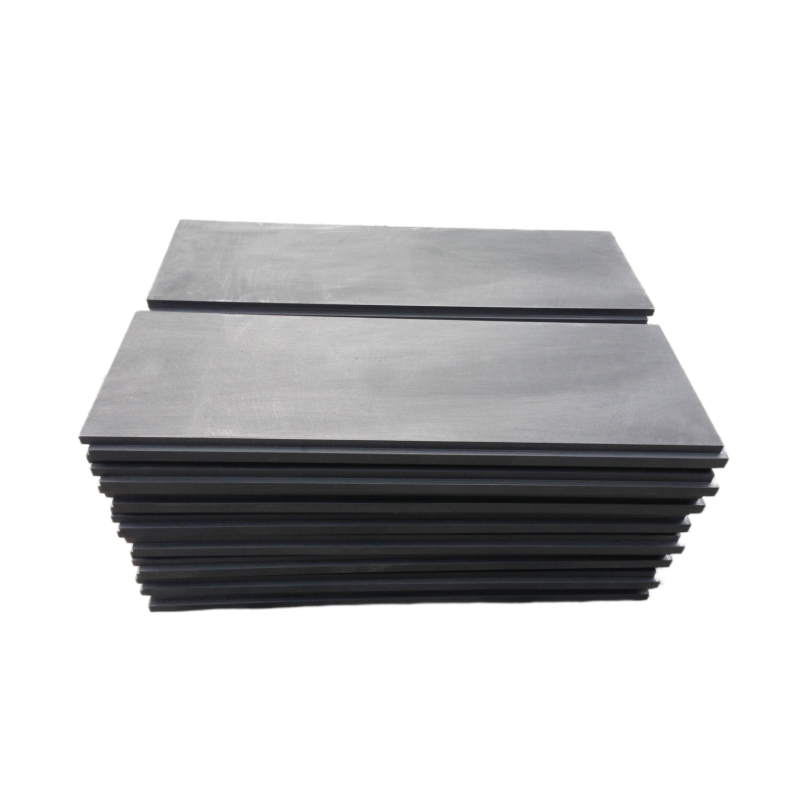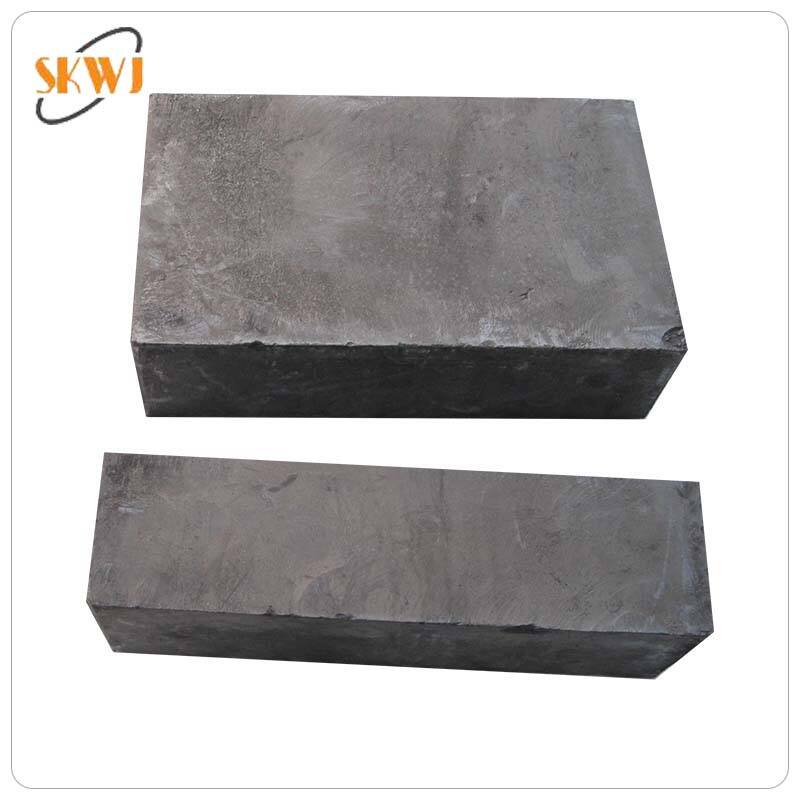Unlocking the Industrial Potential of Graphite Blocks
In modern industry, the choice of material can determine the efficiency, durability, and cost-effectiveness of a process. Among the many materials employed across different sectors, graphite stands out due to its unique properties. Particularly, graphite blocks have gained widespread attention for their reliability and performance in high-temperature and chemically aggressive environments. These blocks are engineered from synthetic or natural graphite and exhibit a rare combination of mechanical strength, thermal stability, and chemical inertness. Their versatility has made them indispensable in sectors ranging from metallurgy and electronics to energy and chemical processing, where traditional materials often fall short.
High-Temperature Applications in Metallurgical Processes
Crucibles and Molds for Metal Casting
One of the most common uses of graphite blocks in metallurgy is in the manufacture of crucibles and molds used for metal casting. These blocks are ideal for this role because of their ability to withstand extremely high temperatures without melting or degrading. When molten metals such as aluminum, copper, or gold need to be poured and formed into precise shapes, graphite blocks provide the necessary thermal resistance and dimensional stability. They also offer excellent thermal conductivity, allowing for faster and more uniform heat distribution, which is crucial in producing high-quality metal components.
Furnace Components and Heat Shields
Graphite blocks are frequently used to construct furnace linings, heat shields, and insulating components in metallurgical operations. In high-temperature furnaces used for sintering or smelting, traditional materials tend to break down or degrade quickly under prolonged heat exposure. Graphite, however, remains stable even above 3000°C in inert or vacuum conditions. Moreover, the lightweight nature of graphite blocks reduces the overall thermal mass of the furnace, improving energy efficiency and operational control. These qualities make graphite blocks an essential material in high-performance industrial furnaces.

Precision Roles in the Semiconductor and Electronics Industry
Machined Components for Semiconductor Equipment
The semiconductor industry requires materials that are both chemically pure and dimensionally stable. Graphite blocks are machined into critical components such as susceptors, boats, and carriers used in wafer production and crystal growth systems. These processes involve exposure to extreme heat and reactive gases, conditions where graphite blocks consistently maintain structural integrity. Their low outgassing rates and high thermal shock resistance make them well-suited for ultra-clean environments, ensuring product quality and equipment longevity.
Electrodes and Heat Dissipation Plates
Graphite blocks are also used as electrodes in various electrical discharge machining (EDM) and plasma-enhanced processes. These applications rely on graphite’s excellent electrical conductivity and resistance to thermal stress. Moreover, the high thermal conductivity of graphite blocks allows them to act as effective heat sinks or heat dissipation plates in electronic devices and power systems. As modern electronics continue to miniaturize and increase in power density, graphite blocks offer a reliable solution for thermal management challenges.
Essential Functions in Chemical and Petrochemical Processing
Corrosion-Resistant Linings and Components
In chemical processing plants, many components are routinely exposed to harsh acids, alkalis, and high-pressure steam. Graphite blocks, being chemically inert, are used to manufacture corrosion-resistant linings for reactors, columns, and processing vessels. These linings extend the lifespan of equipment and reduce maintenance costs by preventing chemical degradation. Additionally, graphite blocks are preferred in processes like hydrochlorination and phosphoric acid production, where stainless steel or ceramic alternatives would fail due to corrosion or brittleness.
Heat Exchangers for Aggressive Fluids
Another vital use of graphite blocks in the chemical industry is in heat exchangers designed to handle aggressive fluids. Unlike metal heat exchangers, graphite units are unaffected by corrosive liquids and gases, making them ideal for transferring heat between reactive chemicals. These graphite block heat exchangers are designed with channels and holes that allow efficient fluid flow while resisting erosion and contamination. Their long service life and minimal maintenance requirements make them a cost-effective and reliable option for chemical manufacturers worldwide.
Expanding Uses in Energy Production and Storage
Components in Nuclear Energy Systems
Graphite blocks have a long history of use in nuclear power systems due to their ability to function as moderators and structural supports in nuclear reactors. Their neutron moderation capacity and resistance to radiation damage are essential for maintaining the stability and efficiency of the nuclear fission process. In modern reactor designs, graphite blocks continue to be used in core assemblies, shielding, and control rod structures. Their predictable performance under radiation and heat stress ensures safety and consistency in power generation.
Thermal Storage and Battery Technologies
As renewable energy systems grow in popularity, the demand for efficient energy storage materials has increased. Graphite blocks are now being utilized in thermal energy storage systems where heat captured from solar or industrial processes is stored in the material and released as needed. Their high thermal conductivity and heat capacity make them ideal for storing and distributing thermal energy with minimal losses. Additionally, in battery technologies such as lithium-ion and sodium-ion cells, graphite plays a critical role in electrode design, and larger graphite blocks are being studied for scalable battery systems.
Specialized Use in Industrial Machining and Tooling
Jigs, Fixtures, and Precision Tooling
Industrial machining processes often require precision jigs and fixtures that can resist wear and thermal expansion. Graphite blocks are frequently chosen for these tasks because they can be precisely machined into complex shapes while maintaining stability under thermal cycling. Their low coefficient of thermal expansion and high machinability make them suitable for holding parts in place during high-precision machining. In addition, they are used to create tooling for hot glass molding and aerospace component production, where standard tooling materials would not survive.
EDM Electrodes for Complex Shapes
Electrical discharge machining relies heavily on graphite blocks as the preferred material for EDM electrodes. These electrodes need to conduct electricity efficiently while withstanding erosion and heat. Graphite blocks can be easily shaped into intricate forms needed to produce detailed cavities or sharp angles in hardened metals. Furthermore, they offer better wear resistance and lower cost compared to copper electrodes, especially for large-scale or repeated production tasks. Their performance in EDM applications reinforces the value of graphite blocks in precision manufacturing.
Advantages of Graphite Blocks in Industrial Design
Lightweight and Easy to Machine
One of the most attractive features of graphite blocks is their lightweight nature compared to metals or ceramics. This makes them easier to transport, install, and integrate into equipment designs without sacrificing strength or durability. Additionally, graphite blocks can be machined using standard tools, allowing for rapid prototyping and adjustments. This versatility supports fast design iterations and the creation of custom components, speeding up project timelines and reducing development costs.
Sustainability and Long-Term Reliability
As industries move toward more sustainable practices, the use of durable and recyclable materials becomes increasingly important. Graphite blocks contribute to this goal by offering long operational lifespans with minimal environmental impact. They do not require frequent replacements, generate low waste, and can be recycled or repurposed for other applications. Their reliability under stress and extreme conditions also means fewer breakdowns and less downtime, which translates into improved productivity and reduced environmental footprint.
Integration of Graphite Blocks in Emerging Technologies
Additive Manufacturing and Prototyping
In the field of additive manufacturing, graphite blocks are beginning to play a role in supporting sintering and heat treatment processes for 3D-printed parts. Their ability to handle high temperatures and maintain structural integrity under stress makes them useful as build platforms or supporting structures in advanced prototyping labs. As 3D printing continues to evolve, graphite blocks will likely see increased use in hybrid manufacturing systems where thermal management and structural consistency are critical.
Aerospace and Defense Applications
The aerospace and defense industries demand materials that can perform in extreme environments—high altitude, rapid temperature change, and high mechanical stress. Graphite blocks meet these demands through their thermal shock resistance, mechanical strength, and dimensional stability. They are increasingly used in rocket nozzle linings, high-speed wind tunnel components, and thermal protection systems. Their integration into next-generation aircraft and spacecraft designs highlights the growing importance of graphite blocks in technologically advanced sectors.
FAQ
What makes graphite blocks ideal for high-temperature applications?
Graphite blocks maintain structural integrity at temperatures exceeding 3000°C, especially in inert or vacuum environments. Their excellent thermal conductivity and low thermal expansion make them perfect for applications like furnaces, crucibles, and molds.
Are graphite blocks suitable for chemically aggressive environments?
Yes, graphite blocks are chemically inert and highly resistant to acids, alkalis, and most corrosive substances. This makes them an excellent choice for chemical reactors, heat exchangers, and other components exposed to harsh chemicals.
Can graphite blocks be customized for specific industrial uses?
Absolutely. Graphite blocks are easy to machine and can be shaped into complex forms such as electrodes, jigs, and precision tools. This adaptability makes them valuable for custom industrial applications.
How long do graphite blocks typically last in industrial settings?
The lifespan of graphite blocks varies depending on the application, but they are generally long-lasting due to their resistance to heat, corrosion, and wear. Properly maintained, they can serve reliably for many years without significant degradation.
Table of Contents
- Unlocking the Industrial Potential of Graphite Blocks
- High-Temperature Applications in Metallurgical Processes
- Precision Roles in the Semiconductor and Electronics Industry
- Essential Functions in Chemical and Petrochemical Processing
- Expanding Uses in Energy Production and Storage
- Specialized Use in Industrial Machining and Tooling
- Advantages of Graphite Blocks in Industrial Design
- Integration of Graphite Blocks in Emerging Technologies
- FAQ






